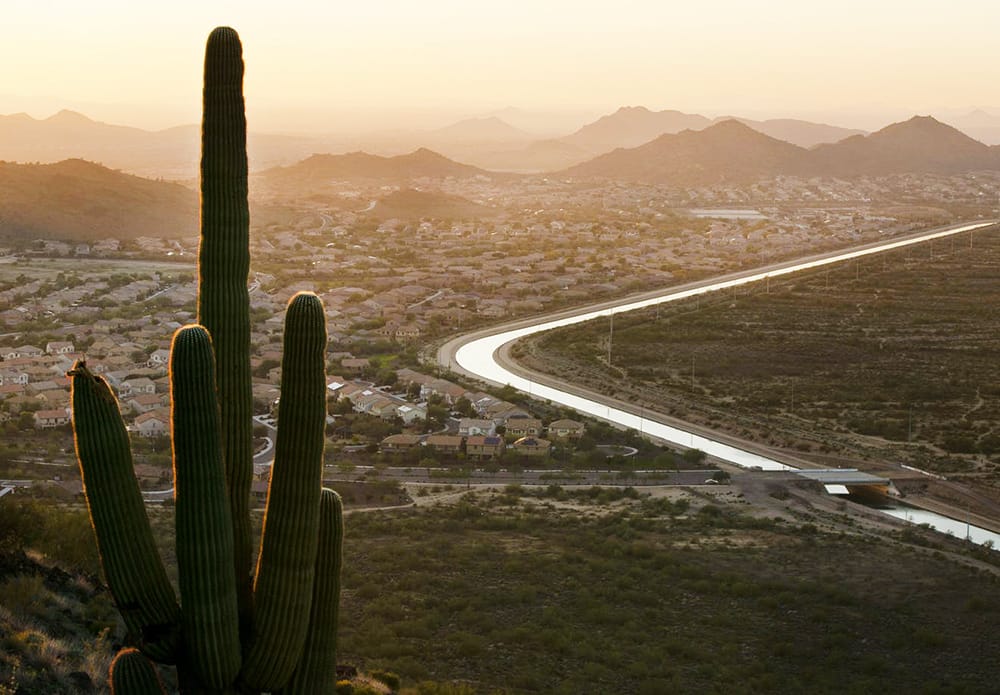The Central Arizona Project Canal runs through Scottsdale, Ariz., carrying Colorado River water.
By Ian James | Arizona Republic
In 1980, Arizona began regulating groundwater in the state’s largest cities and suburbs under a landmark law that called for most of these areas to achieve an overarching goal by 2025: a long-term balance between the amount of water pumped from the ground and the amount seeping back underground to replenish aquifers.
Forty-one years later, the state’s latest data shows most of the areas where groundwater is managed remain far from achieving a long-term balance, a goal known as “safe yield.” Groundwater is still overpumped in most of the state’s “active-management areas,” or AMAs. And in many places, aquifer levels continue to decline.
In a new report, researchers at Arizona State University warn that groundwater has been seriously overallocated under the current laws, allowing for unsustainable pumping that threatens the state’s water future. They say the state’s leaders urgently need to reform Arizona’s groundwater rules to safeguard these finite reserves and prevent aquifers from continuing to drop.





